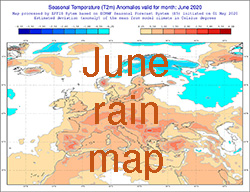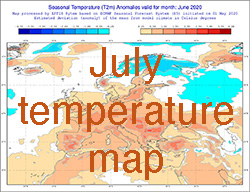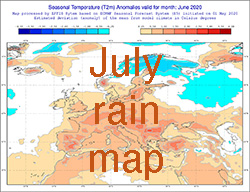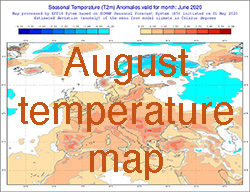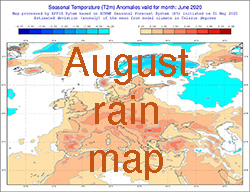USA
Early spring dry fields were welcome for getting a start on planting. Less than normal rainfall over much of the grain belt along with quickly warming temperatures is drying fields quickly. The long-range forecast is for a much warmer and dryer summer. This may put into place a much different set of mycotoxin risks than what was present over the past 2 years. It does appear that crop stresses will be in place.
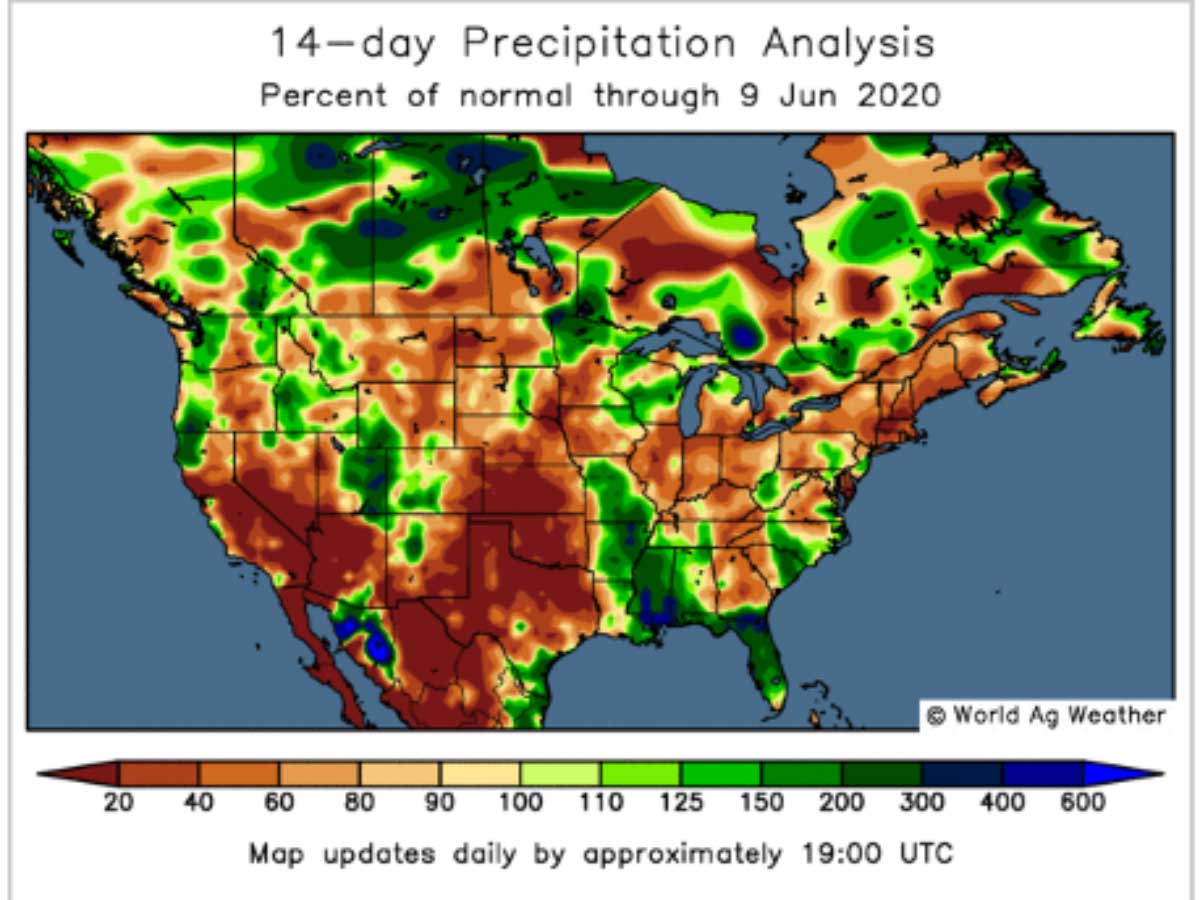
Click the maps below for more information
Wheat harvest has begun in the southern plains with reports of above normal yields.
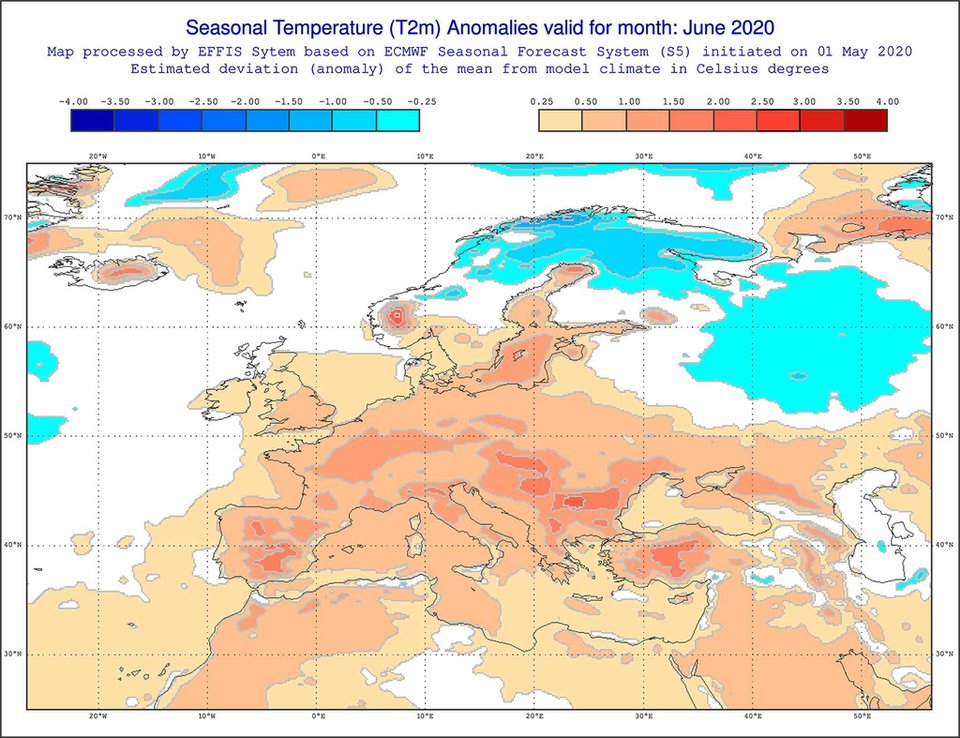
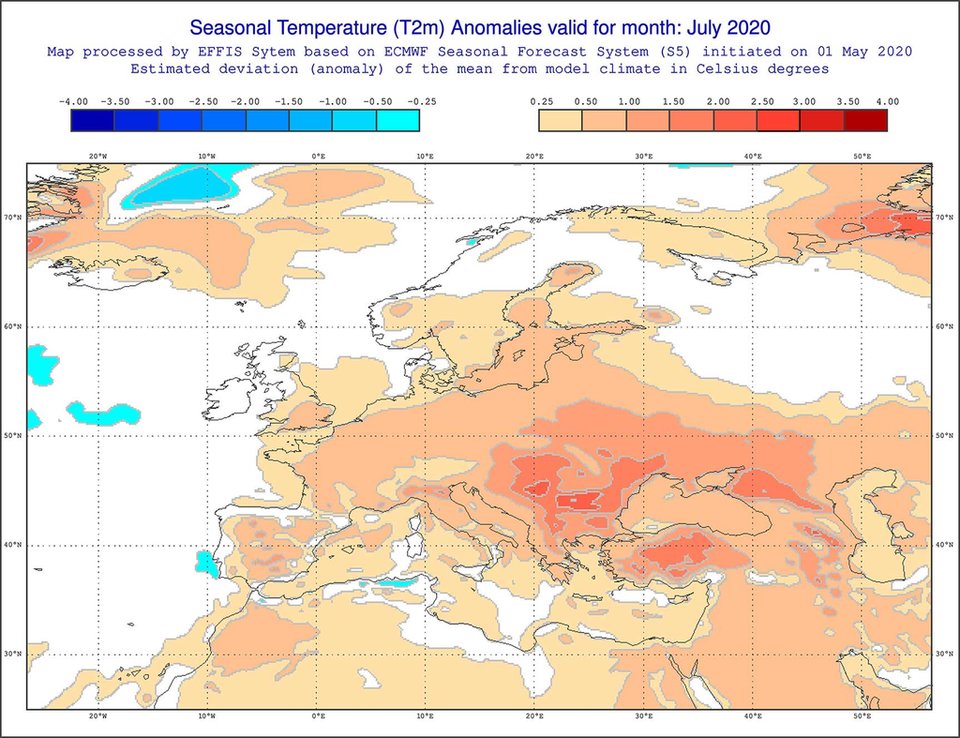
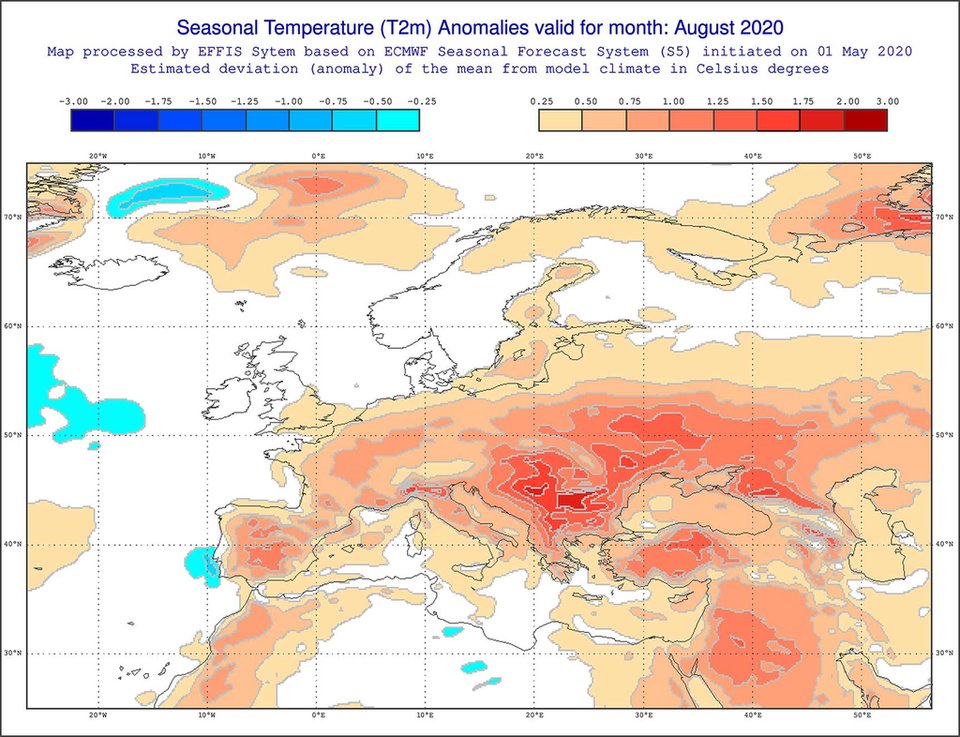
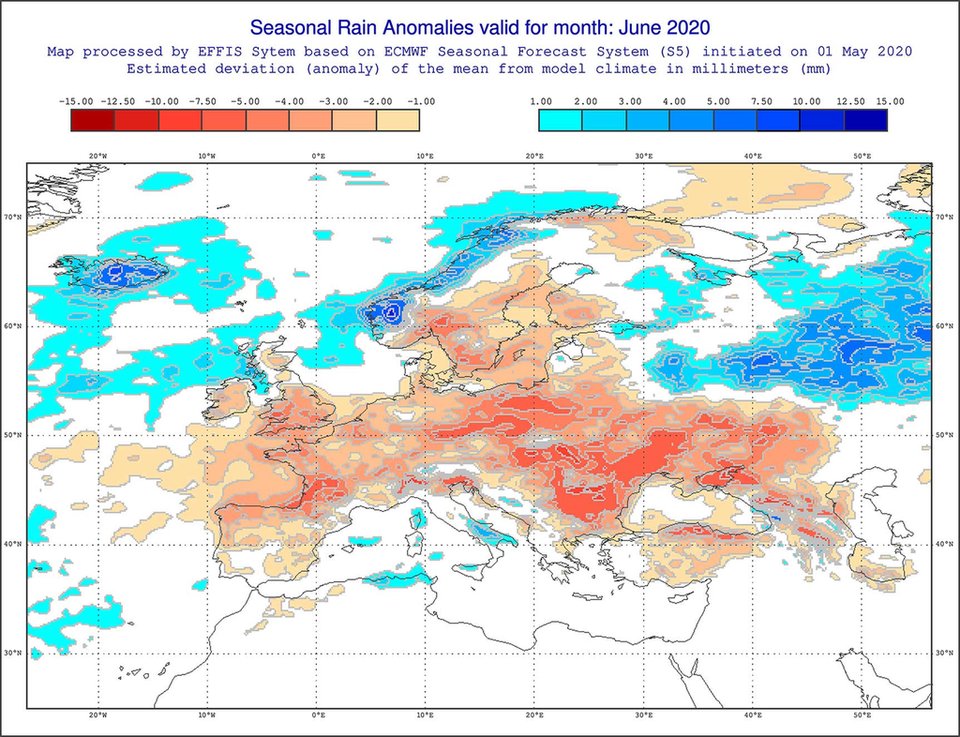
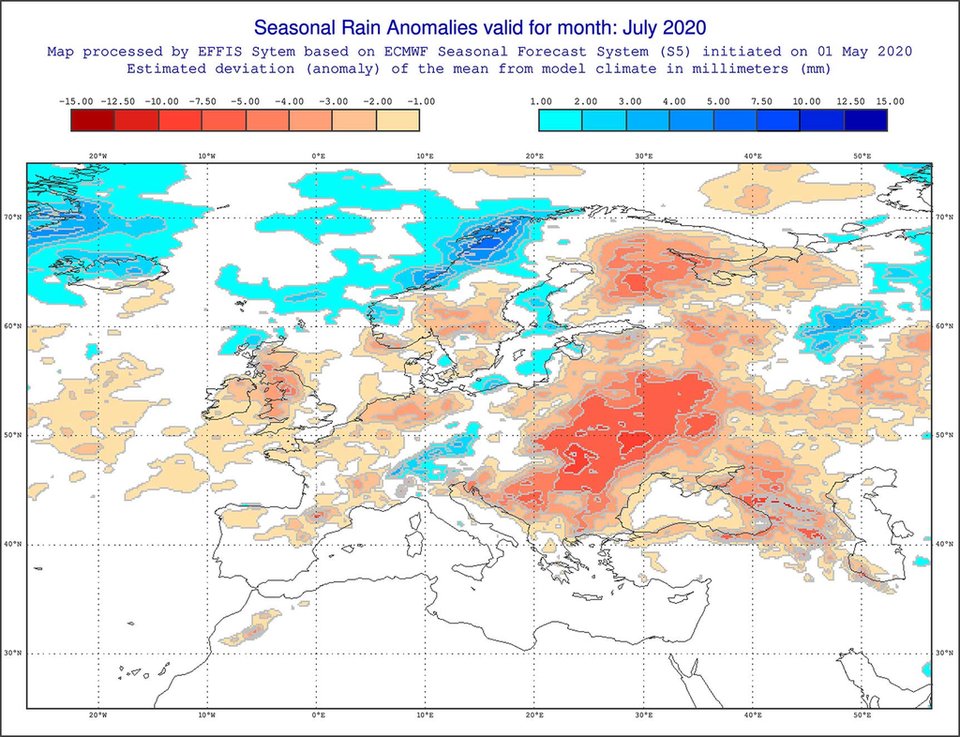
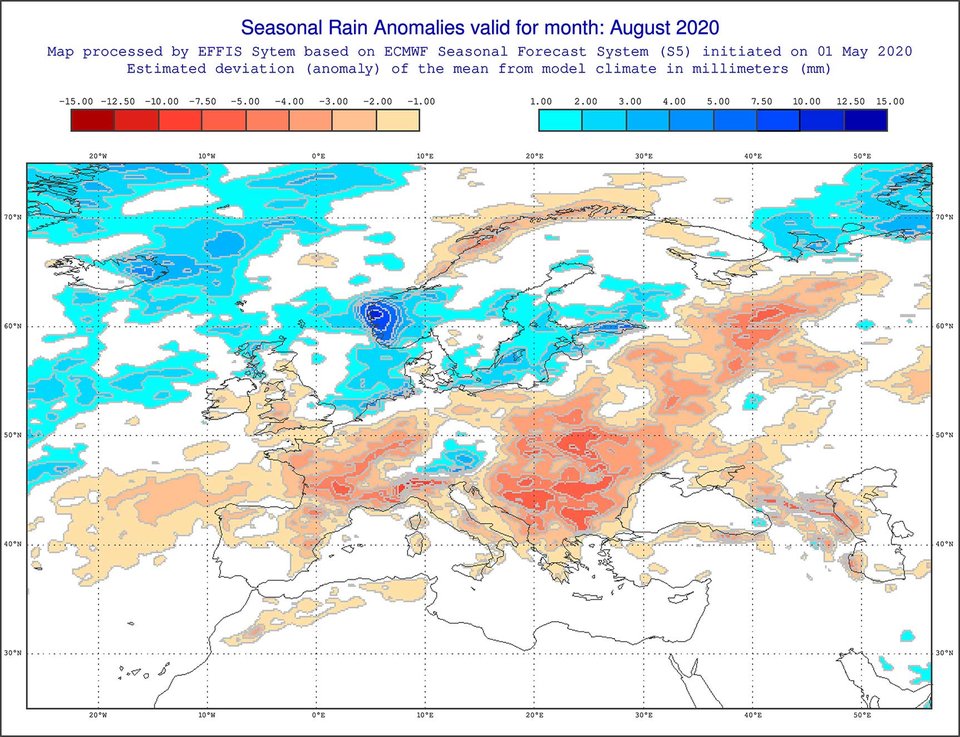
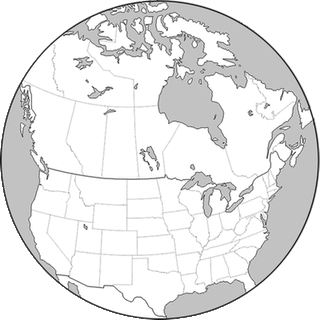
Europe
The winter of 2019 for Europe was, for the most part, one of the warmest two winters in the past 40 years (JRC MARS Bulletin Vol. 28 No. 3, March 2020). The U.K., northern Europe and the Mediterranean coastal areas in southern Europe are the areas that received above-normal to normal rainfall, with the remainder of Europe at less-than-normal precipitation. The majority of Europe is starting the spring and summer with drier-than-normal soils and warmer-than-normal temperatures.
Looking forward to planting and growing season and harvest for cereals, the forecast maps (https://effis.jrc.ec.europa.eu/applications/seasonal-forecast/) indicate some potential issues.
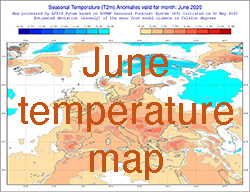
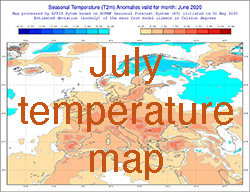
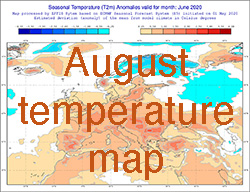
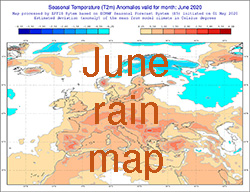
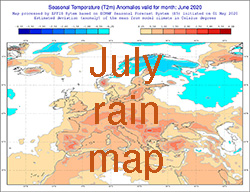
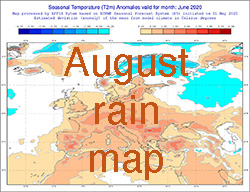
At the time of writing, all of Europe is forecast to be warmer than usual in May–July. Already dryer-than-normal soils will warm quicker and intensify the heating. The potential crop stress may be evident with lower yields and grain quality. As for precipitation, much of Europe’s grain production area is projected to receive lower-than-normal rainfall. Portions of northern and eastern Europe are forecast to receive above-normal rainfall in June and July. The timing of this rainfall may create a situation for increased Fusarium molds in small grain crops. These molds can produce Trichothecenes, Fusaric Acid, Zearalenone and Emerging Mycotoxins. The resulting risk can impact livestock feed intake, weight gain, milk and egg production, reproduction and immune response.

Europe
The winter of 2019 for Europe was, for the most part, one of the warmest two winters in the past 40 years (JRC MARS Bulletin Vol. 28 No. 3, March 2020). The U.K., northern Europe and the Mediterranean coastal areas in southern Europe are the areas that received above-normal to normal rainfall, with the remainder of Europe at less-than-normal precipitation. The majority of Europe is starting the spring and summer with drier-than-normal soils and warmer-than-normal temperatures.
Looking forward to planting and growing season and harvest for cereals, the forecast maps (https://effis.jrc.ec.europa.eu/applications/seasonal-forecast/) indicate some potential issues.
At the time of writing, all of Europe is forecast to be warmer than usual in May–July. Already dryer-than-normal soils will warm quicker and intensify the heating. The potential crop stress may be evident with lower yields and grain quality. As for precipitation, much of Europe’s grain production area is projected to receive lower-than-normal rainfall. Portions of northern and eastern Europe are forecast to receive above-normal rainfall in June and July. The timing of this rainfall may create a situation for increased Fusarium molds in small grain crops. These molds can produce Trichothecenes, Fusaric Acid, Zearalenone and Emerging Mycotoxins. The resulting risk can impact livestock feed intake, weight gain, milk and egg production, reproduction and immune response.
USA
Early spring dry fields were welcome for getting a start on planting. Less than normal rainfall over much of the grain belt along with quickly warming temperatures is drying fields quickly. The long-range forecast is for a much warmer and dryer summer. This may put into place a much different set of mycotoxin risks than what was present over the past 2 years. It does appear that crop stresses will be in place.
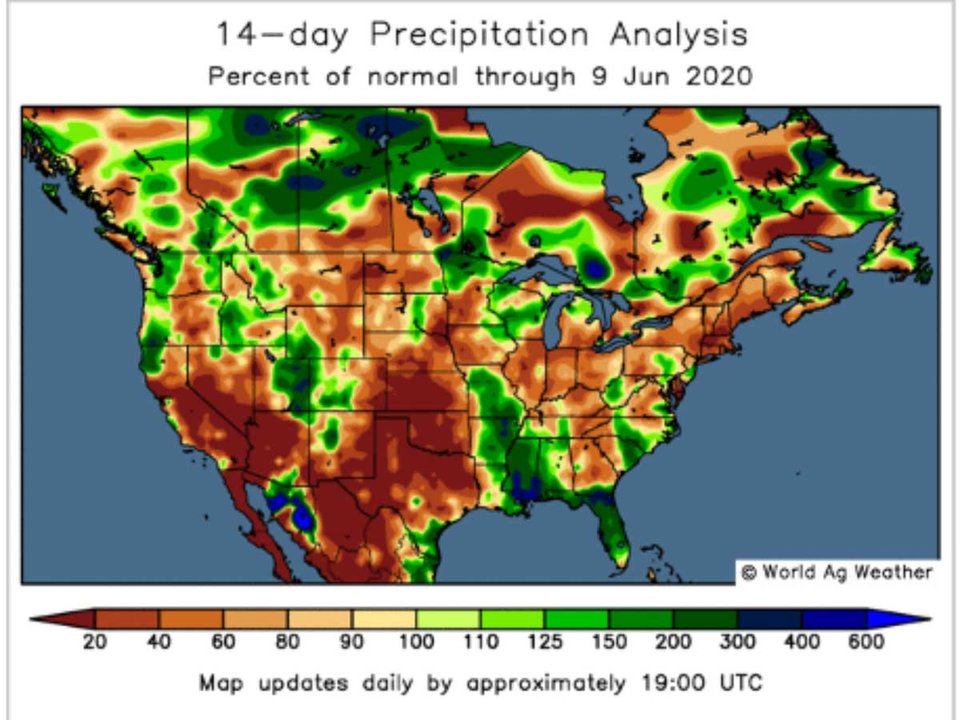
Wheat harvest has begun in the southern plains with reports of above normal yields.



